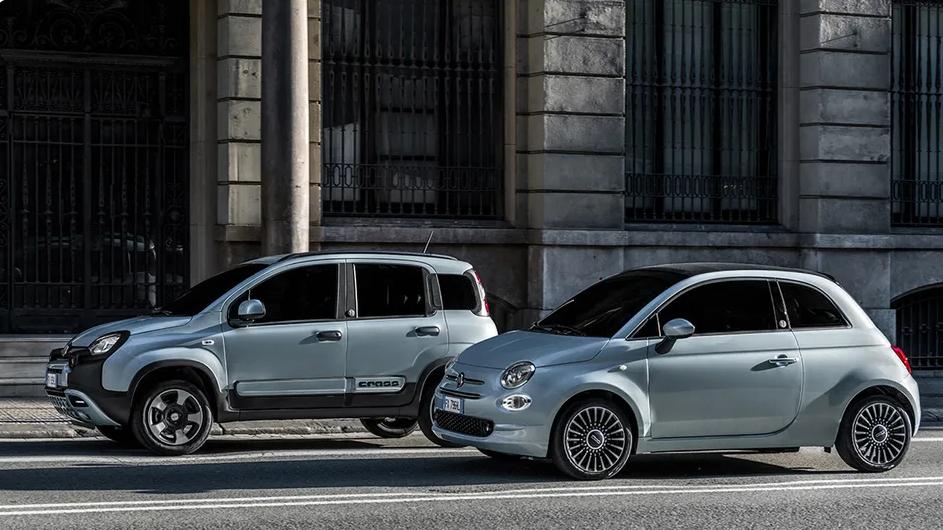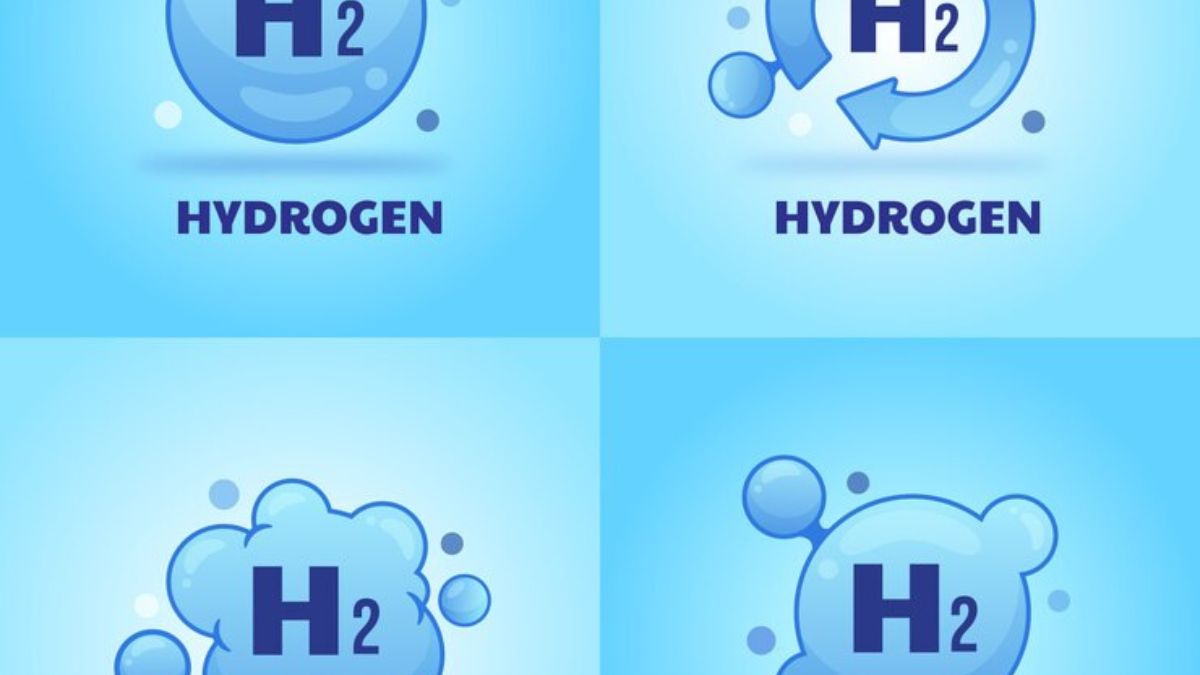Automotive
Navigating your career path: expert resume tips for cultural professionals

In the cultural sector, your resume isn’t just a formal document listing your job experiences; it’s a portfolio of your professional journey, showcasing your understanding of culture and art. Given the competitive nature of the field, a well-constructed resume is crucial to making a lasting impression on potential employers and collaborators.
Understanding the Cultural Sector Resume
- Emphasis on Projects and Contributions: Unlike more conventional sectors, cultural professions often focus on projects, exhibitions, and productions. Highlight specific projects you’ve contributed to, detailing your role and the project’s impact.
- Incorporating Visual Elements: If applicable, consider including visual elements such as small images of your work or a tasteful, creative layout that reflects your aesthetic sensibility without sacrificing readability.
- Education and Continuous Learning: List relevant degrees and certifications, and also include workshops, seminars, and courses that show your commitment to ongoing professional development.
Resume Structure
- Header: Include your name, contact information, and professional title.
- Professional Summary: Craft a brief, compelling summary that captures your essence as a cultural professional, highlighting key skills and major achievements.
- Professional Experience: Use reverse chronological order to detail your work history. Focus on achievements rather than responsibilities. Use action verbs and quantify results when possible.
- Education: List your highest degree first and do not forget to include any specializations or important projects.
- Skills: Highlight both hard and soft skills. For cultural professionals, skills like critical thinking, creative problem-solving, and familiarity with industry-specific software are valuable.
- Additional Sections: Include languages, publications, licenses, or professional memberships.
Expert Tips
- Customize Your Resume: Tailor your resume for each application based on the job description and the institution’s focus. Emphasize the experiences and skills that are most relevant to the position.
- Professionalism Over Pizzazz: While creativity is important, clarity and professionalism should not be compromised. Ensure that your resume is easy to read with a clean layout.
- Use of Keywords: Many organizations use automated scanning tools for initial resume reviews. Incorporate relevant keywords from the job description to ensure your resume passes these automated reviews.
- Cover Letter: Always pair your resume with a strong cover letter that narrates your passion for the cultural field and explains why you are a good fit for the specific role.
Digital Presence
In today’s digital age, maintaining an online professional presence is crucial. Include links to your LinkedIn profile, digital portfolio, or professional website. These links provide employers with deeper insights into your professional journey and achievements.
Final Checks
Before sending out your resume, double-check for any typos or grammatical errors. It might also be helpful to have a peer or mentor from the cultural sector review your resume to provide feedback and suggestions.
Conclusion
Your resume is a critical tool in your career development within the cultural sector. It should reflect your personality, professionalism, and passion for culture and art. With careful attention to detail, a tailored approach, and a blend of creativity and professionalism, your resume will pave the way to new opportunities and successes in your field.
By following these guidelines, you can craft a resume that not only showcases your unique skills and experiences but also resonates with the cultural nuances of your target audience. Whether you’re applying for a grant, seeking a position at a museum, or looking for a role in an arts festival, a well-crafted resume is your first step toward achieving your career goals in the cultural sector.
Automotive
Essential Tips On How To Improve Your Fiat’s Fuel Efficiency

For many Fiat owners, maximising fuel efficiency isn’t just about saving money – it’s about getting the best performance and longevity out of a vehicle that has a rich heritage. In today’s challenging economic and environmental landscape, optimising fuel consumption is both a practical and responsible endeavour. Fortunately, there are several strategies that can help you improve your Fiat’s fuel efficiency, ranging from simple driving habits to more technical maintenance tips.
Understanding the Factors That Influence Fuel Efficiency
Fuel efficiency in any vehicle is affected by a range of factors including engine performance, aerodynamics, weight, and driving behaviour. For a Fiat, factors such as engine tuning, air intake, and even the condition of the spark plugs can have a significant impact on how efficiently fuel is used. Properly maintaining these components ensures that your engine operates at peak efficiency, thereby reducing fuel consumption.
Modern vehicles incorporate sophisticated systems like fuel injection and electronic control units (ECU) that optimise the fuel-to-air mixture during combustion. Regular checks and adjustments to these systems can lead to notable improvements in fuel efficiency. Additionally, factors such as tyre pressure, engine oil viscosity, and the cleanliness of the air filters all play their part in ensuring that your Fiat runs efficiently.
Optimising Engine Performance
One of the most direct methods to improve fuel efficiency is by ensuring your engine is in optimal condition. Regular servicing is key – this includes timely oil changes, spark plug replacements, and fuel system cleanings. The fuel system should be checked for any blockages or issues that might be causing inefficient fuel delivery. An OBD (On-Board Diagnostic) scanner can be a useful tool to diagnose potential issues such as a malfunctioning oxygen sensor, which, if left unchecked, can lead to increased fuel consumption.
Additionally, tuning the engine to the manufacturer’s specifications is essential. A well-tuned engine ensures that fuel is burned as efficiently as possible, reducing waste and improving performance. For owners looking for professional assistance, a reputable service provider like Automoda can offer expert tuning and maintenance services tailored specifically to Fiats and Alfa Romeos.
Enhancing Aerodynamics and Reducing Weight
Aerodynamics plays a crucial role in fuel consumption. Even minor modifications, such as removing unnecessary roof racks or ensuring that external accessories are streamlined, can reduce drag and improve fuel economy. Reducing vehicle weight is another effective method to increase efficiency. Removing excess weight—whether it’s unused items stored in the boot or heavy modifications that are not essential for everyday driving—can lead to better fuel economy by reducing the load on your engine.
Regularly checking and maintaining your vehicle’s bodywork and seals can also help. Poorly sealed areas might cause unwanted air leaks, affecting the vehicle’s overall aerodynamics and efficiency.
The Importance of Regular Maintenance
Consistent maintenance not only preserves your Fiat’s performance but also ensures it runs more efficiently over time. Scheduled servicing should include checks on the air intake system, engine diagnostics, and even the exhaust system. Ensuring that the exhaust system is free of blockages and operating efficiently can help maintain optimal combustion, reducing fuel waste.
Moreover, using the correct grade of engine oil and replacing it at recommended intervals is crucial. Engine oil that is too old or not of the right specification can cause friction and reduce engine performance, leading to increased fuel consumption.
Adapting Your Driving Habits
Driving style has a significant impact on fuel efficiency. Smooth acceleration, maintaining a steady speed, and avoiding rapid braking are simple but effective techniques. Try to plan your journeys to avoid peak traffic hours and reduce idle times. The use of cruise control on long highway stretches can also help maintain a constant speed and improve fuel consumption.
Regularly monitoring your driving habits and being conscious of fuel efficiency can lead to behavioural changes that cumulatively result in significant savings. Small adjustments, like maintaining optimum tyre pressure and avoiding overloading the vehicle, are equally important.
Additional Considerations for Improving Efficiency
While many improvements can be achieved through regular maintenance and sensible driving habits, certain modifications can further boost your Fiat’s fuel economy. Installing performance air filters, using low-resistance tyres, and even considering a slight ECU remap can contribute to improved efficiency. However, such modifications should always be undertaken with professional guidance to ensure they do not negatively impact vehicle safety or warranty conditions.
Takeaway
Improving your Fiat’s fuel efficiency is a multifaceted process that blends regular maintenance, smart driving habits, and expert professional support. Expert technicians can diagnose subtle performance issues and provide targeted solutions that fine-tune your vehicle for maximum efficiency. By adopting this comprehensive approach, you not only save money on fuel and reduce long-term repair costs but also contribute to a greener environment. With the right care and professional guidance, your Fiat will deliver a smooth, efficient driving experience for years to come.
Automotive
Hcooch ch2 h2o: A Deep Dive into Molecular Structures

In this post, we’ll embark on an exploration of hcooch ch2 h2o, diving deep into its significance and applications. Whether you’re a seasoned chemist or just curious about how molecules shape our lives, there’s something here for everyone as we unravel the mystery behind this intriguing formula. Buckle up; it’s going to be an enlightening journey!
The Basics of Hydrocarbons: Hcooch ch2 h2o
Hydrocarbons are organic compounds consisting solely of hydrogen and carbon atoms. They serve as the foundational building blocks for a vast array of chemical structures, including hcooch ch2 h2o.
Hcooch represents an ester group, while ch2 indicates a methylene unit. The presence of water in this formula highlights the importance of hydration in molecular interactions. Understanding these basic components is crucial for grasping how they function within larger biological and chemical systems.
These molecules can exist in various forms—saturated or unsaturated—each displaying unique properties based on their structure. Saturated hydrocarbons feature single bonds, whereas unsaturated ones contain double or triple bonds.
The arrangement and bonding between these atoms dictate reactivity, stability, and overall behavior in different environments. This complexity makes hydrocarbons essential to life on Earth and countless industrial applications.
Chemical Bonds: Covalent, Ionic, and Hydrogen
Chemical bonds are the forces that hold atoms together, forming the intricate structures we see in molecules. Understanding these bonds is crucial when exploring compounds like hcooch ch2 h2o.
Covalent bonds occur when two atoms share electrons. This sharing creates a stable connection and allows for complex molecular formations. In many organic compounds, including those of hcooch ch2 h2o, covalent bonding plays a vital role.
Ionic bonds differ significantly. They form through the transfer of electrons from one atom to another. This exchange results in charged ions that attract each other due to opposite charges. Such interactions can be found in various salts and minerals.
Hydrogen bonds are weaker but equally important. These attractions happen between hydrogen atoms and electronegative elements like oxygen or nitrogen. Hydrogen bonding influences water’s unique properties, making it essential for life as we know it.
Importance of Molecular Structures in Everyday Life
Molecular structures play a crucial role in our daily lives, influencing everything from the food we eat to the products we use. Understanding these structures helps us grasp how substances interact and behave.
For instance, the arrangement of atoms in water molecules affects its properties—essential for life itself. The unique structure of Hcooch ch2 h2o contributes to its behavior as a solvent, vital for biological processes.
Furthermore, molecular structures are essential in medicine. They determine how drugs interact with our bodies, impacting their efficacy and safety.
In agriculture, knowledge of molecular compositions aids in developing fertilizers and pesticides that enhance crop yield while minimizing environmental impact.
Even in technology, materials science relies on understanding molecular arrangements to create innovative devices and sustainable solutions. Each aspect showcases just how intertwined molecular structures are with everyday functions and advancements.
Applications of Hcooch ch2 h2o in Various Industries
Hcooch ch2 h2o plays a vital role across multiple industries. In the pharmaceutical sector, this compound aids in drug formulation and delivery. Its molecular structure allows for effective interaction with biological systems.
In agriculture, Hcooch ch2 h2o is essential in creating herbicides and pesticides. It enhances the efficacy of these products while minimizing environmental impact.
The food industry also benefits from this compound. It serves as an emulsifier, helping to blend ingredients smoothly for various food products. This ensures consistent texture and flavor in processed foods.
Moreover, Hcooch ch2 h2o finds applications in cosmetics and personal care items. Its properties help maintain moisture levels and improve product stability, ensuring a better experience for consumers.
As we explore further into its uses, it becomes clear that Hcooch ch2 h2o is indispensable across diverse fields. Each application showcases the versatility of this interesting molecular structure.
Conclusion:
Understanding the molecular structure of compounds like Hcooch ch2 h2o opens up a world of possibilities. It helps us appreciate the intricate connections that form the basis of chemistry.
The significance extends beyond academics; it impacts industries ranging from pharmaceuticals to agriculture. The way we harness these molecules can lead to innovative solutions for everyday challenges.
As we delve deeper into research, new applications continue to emerge. Each discovery paves the way for enhanced products and processes that shape our lives.
FAQ’S
What does Hcooch ch2 h2o represent?
Hcooch ch2 h2o refers to a molecular structure that includes hydrocarbon elements, specifically highlighting the presence of functional groups and water molecules. It plays an essential role in organic chemistry.
How are chemical bonds formed in Hcooch ch2 h2o?
This compound showcases various types of chemical bonds, including covalent bonds which connect atoms, allowing for stable molecule formation. Understanding these interactions is key to grasping how such compounds behave.
Why are molecular structures important?
Molecular structures like Hcooch ch2 h2o influence many aspects of our daily lives. They determine physical properties like boiling points and solubility while also guiding reactions that occur within biological systems.
Automotive
How to Reach betechit.com contacts: A Comprehensive Overview of Our Contact Channels

Are you looking to connect with betechit.com contacts? Whether you’re seeking support, have questions, or simply want to share your thoughts, knowing how to reach out effectively can make all the difference. With the rise of digital communication, there are various ways to get in touch—each catering to different needs. This guide will walk you through the importance of reaching out and provide a comprehensive overview of the contact channels available at betechit.com. Get ready to enhance your experience and make meaningful connections!
The Importance of Contacting betechit.com contacts
Reaching out to betechit.com contacts is crucial for anyone looking to enhance their tech knowledge or seek assistance. Whether you have questions about services, technical issues, or collaboration opportunities, the right contact can make all the difference.
Engaging with betechit.com opens doors to valuable insights and support tailored to your needs. It fosters a direct line of communication that ensures clarity and quick problem resolution.
Moreover, connecting with betechit.com allows you to stay updated on the latest offerings and innovations. This is especially important in an ever-evolving tech landscape where staying informed is key.
Building a relationship through contact can also lead to personalized recommendations based on your interests. It’s not just about getting answers; it’s about creating a connection that enhances your overall experience with technology.
Methods of Contact:
When reaching out to betechit.com contacts, there are several effective methods available.
Email remains a primary channel. It offers a direct line to their support team or specific departments. Simply compose your message with clear subject lines and concise content for better chances of a prompt response.
Social media platforms also serve as valuable contact points. Platforms like Twitter and Facebook allow you to engage with them publicly or through direct messages. This not only provides immediate feedback but can also enhance visibility for your inquiries.
Consider using LinkedIn if you’re looking for professional connections within the company. Connecting on this platform can lead to insightful conversations about industry trends or potential collaborations.
Each method has its advantages, so think about what suits your needs best when attempting to connect with betechit.com contacts.
Email is one of the most straightforward ways to reach betechit.com contacts. Crafting a clear and concise message can set you apart.
Begin with a friendly greeting. Introduce yourself briefly, then state your purpose directly. This ensures that your email gets straight to the point without unnecessary fluff.
Make use of an informative subject line. A well-crafted subject grabs attention and encourages recipients to open your email promptly.
Keep your content professional yet approachable. Use bullet points for important details if necessary. This makes it easier for the recipient to digest your information quickly.
Don’t forget to include relevant contact information at the end of your message. Sign off politely, expressing gratitude for their time or assistance.
Always remember, following up after a few days shows initiative and genuine interest in getting a response from betechit.com contacts.
– Social Media
Social media platforms offer dynamic ways to connect with betechit.com. Engaging through these channels can foster a deeper relationship between you and the brand.
Follow betechit.com on popular platforms like Facebook, Twitter, and Instagram. These spaces not only provide updates but also allow for instant feedback and interaction.
Feel free to comment on posts or send direct messages for inquiries. The team is often responsive, eager to assist with any questions you might have.
Additionally, social media serves as a gateway for community engagement. Participate in discussions and share your experiences to enrich the conversation surrounding betechit.com.
Don’t forget to keep an eye out for announcements about new features or events that may be shared exclusively through these channels. It’s an excellent way to stay connected and informed!
Best Practices for Contacting betechit.com
When reaching out to betechit.com, clarity is key. Start with a concise subject line that captures the essence of your message. This helps ensure your email stands out in their inbox.
Be polite and professional in your communication. A friendly tone can go a long way, but maintaining professionalism is essential for establishing credibility.
If using social media, tailor your approach according to the platform’s culture. Direct messages on Twitter might differ from comments on Facebook or LinkedIn interactions.
Provide relevant context or background information related to your inquiry. This demonstrates that you value their time and are prepared for meaningful engagement.
Always double-check your contact details before hitting send. Ensuring accuracy prevents misunderstandings and delays in responses.
How to Utilize betechit.com’s Contacts for Maximum Benefit
Utilizing betechit.com contacts effectively can set you on the path to success. Begin by identifying your specific needs—whether it’s technical support, general inquiries, or partnership opportunities.
Once you know what you’re after, tailor your message accordingly. A clear and concise request will always yield better results than a vague inquiry.
Engage with their social media platforms too. This not only keeps you updated but also allows for informal interactions that can build rapport.
Don’t hesitate to follow up if you don’t receive a response right away. Persistence shows interest and dedication without being pushy.
Consider feedback as an opportunity for growth. Engaging with contacts at betechit.com can lead to valuable insights that enhance your experience further down the line.
Conclusion:
Reaching out to betechit.com contacts can open doors to valuable information and support. Engaging with their team through the right channels ensures you receive timely responses and assistance tailored to your needs.
The diverse methods available make it easy for anyone, whether you’re a customer or a partner, to connect with them. Each channel serves a unique purpose and offers different advantages.
Remember that effective communication is key. Clear inquiries lead to better responses, paving the way for fruitful interactions.
FAQ’s
What is the best way to reach betechit.com?
The best method often depends on your needs. For quick inquiries, email is effective. If you’re looking for more engagement, social media channels offer a great platform.
How can I ensure my message gets noticed?
Be clear and concise in your communication. Include relevant details and always use a subject line that summarizes your inquiry effectively.
Is there a response time I should expect after contacting betechit.com?
Response times may vary based on the volume of inquiries they receive. Generally, you can expect a reply within 48 hours during business days.
-

 GENERAL1 year ago
GENERAL1 year agoDiscovering the Artistic Brilliance of Derpixon: A Deep Dive into their Animation and Illustration
-

 Posts1 year ago
Posts1 year agoSiegel, Cooper & Co.
-

 Lifestyle1 year ago
Lifestyle1 year agoPurenudism.com: Unveiling the Beauty of Naturist Lifestyle
-

 Lifestyle1 year ago
Lifestyle1 year agoBaddieHub: Unleashing Confidence and Style in the Ultimate Gathering Spot for the Baddie Lifestyle
-

 HEALTH1 year ago
HEALTH1 year agoTransformative Health Solutions: Unveiling the Breakthroughs of 10x Health
-

 Entertainment1 year ago
Entertainment1 year agoGeekzilla Podcast: Navigating the World of Pop Culture, Gaming, and Tech
-

 Entertainment1 year ago
Entertainment1 year agoKhatrimaza Unveiled: Exploring Cinematic Marvels and Entertainment Extravaganza
-

 BUSINESS1 year ago
BUSINESS1 year agoUnlocking the Secrets to Jacqueline Tortorice Remarkable Career and Accomplishments
